This Is (By Far) the Best Way to Remember What You Read in Books
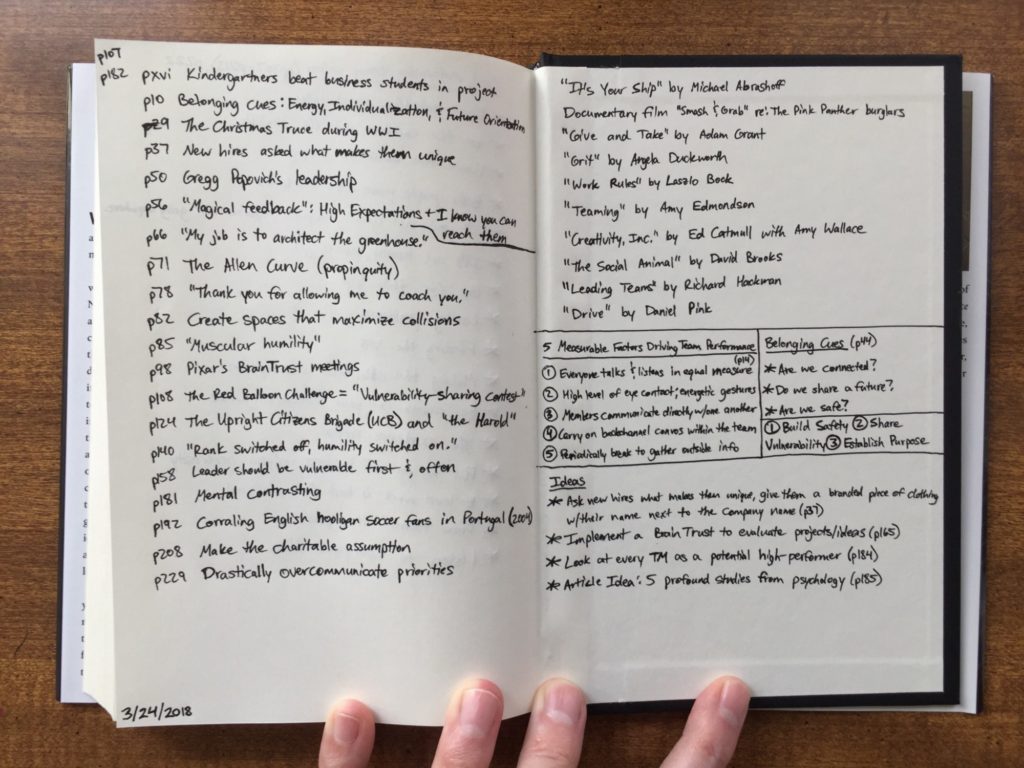
Have you ever run into a situation where you want to locate a specific idea or quote from a book you’ve read, but you can’t find it anywhere?
I used to run into that problem constantly. I’d read an awesome quote or story, but when I tried to find it later, I’d give up after fruitlessly searching for 20 minutes.
Then I realized that I could solve this problem by breaking a convention I had always held sacred: not writing in my books.
Background: I grew up as a straight-laced, book-respecting kid who believed that taking a pencil or pen to a book was the greatest sacrilege one could enact upon the literary world. The horror!
But something finally snapped inside me, and I decide to uncap a pen and do the dirty deed: write in one of my books.
The thrill, the ecstasy, and the terror of the moment enveloped me. I felt like I was doing something wrong…like raiding my brother’s hidden stash of Oreos or double-dipping my Tostitos in the guacamole after my mom told me not to.
But I liked it.
And sure enough, by writing notes in my books, I was able to increase my reading comprehension in two powerful ways:
- The very act of writing those notes helped me remember the details
- I created a “cheat sheet” I could reference later
I’ve written previously about the entire bookish system I use, but I want to focus on the most powerful part of the system: writing in the back cover of every book. That’s right: the disallowed, hallowed ground inside the book’s back cover.
I use the back cover as my two-page cheat code: the single destination I can reference later to track down every note, every quote, every core idea I want to retain from the book.
I used to only write such notes in nonfiction books, but I eventually realized that my reading comprehension was horrible for fiction (because I wasn’t taking notes), so I implemented the system for fiction as well. Now — regardless of the type of book I’m reading — I have a pen in my hand while reading.
Here’s an example of my back cover notes from the nonfiction book Made to Stick by Chip and Dan Heath:
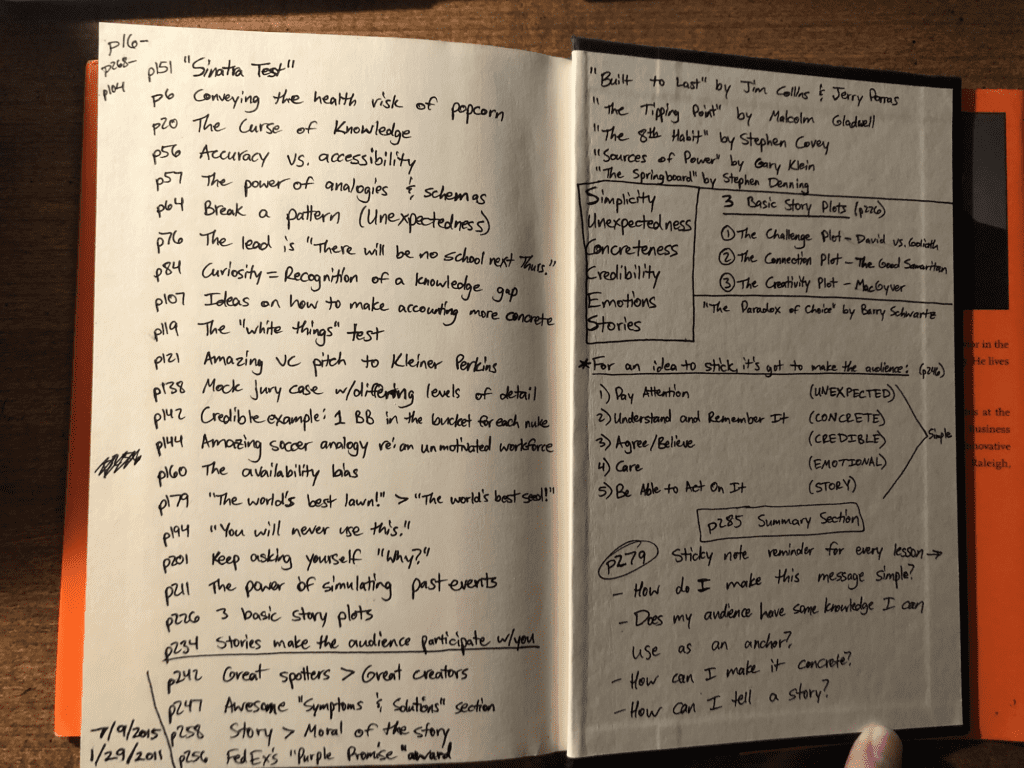
In the upper-left corner of the left page, I jot down the page numbers of a few amazing quotes I want to remember later.
Just to the right of those notes, I write down ideas, facts, and stories I want to remember from the book, along with their corresponding page numbers.
I write just enough detail to refresh my memory of that concept, which is usually a phrase or a single-line sentence. By including that idea and its page number, I can return to explore it in greater detail whenever I need more information, such as if I decide to write an article about that topic later.
I reserve the bottom corner of the left page for a date stamp of when I finished reading that book. If I’ve read the book multiple times, I’ll include multiple date stamps, such as you’ll see above in Made to Stick, and also below in this image from Crucial Conversations by Patterson, Grenny, McMillan, and Switzler.
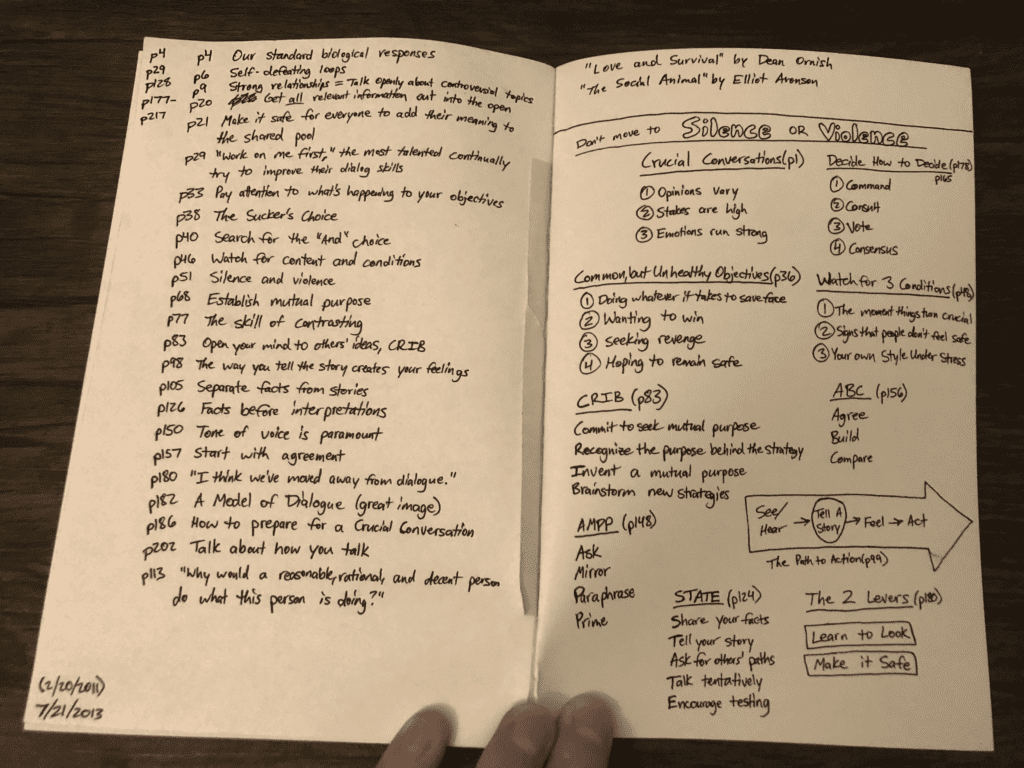
In the image above, you’ll also notice several different types of notes. On the right-hand page, I’ve written a few images that remind me of key lessons from the book.
In this way, my notes within each book are different, depending upon what takeaways seem most important from that specific book.
The upper portion of the right page is where I list other books that the authors referenced — books that I may want to read later. I’ve found that the books cited by my favorite authors are often incredible. (After all, those books were meaningful enough to impact my heroes, so they’re likely worth my time.)
Some authors are especially voracious in their reading, and their works generate dozens of book recommendations that I note for the future. I don’t even write down every book that the author references — only the ones that jump out to me as something I’d like based upon the author’s description.
For many linear books like biographies, historical nonfiction, and company founding stories (I read a lot about tech company startups), I include a chronology of the key events in the story, such as the month/year along with what happened.
For example, here’s a picture of the back cover of my copy of No Filter by Sarah Frier, a story about the founding of Instagram.
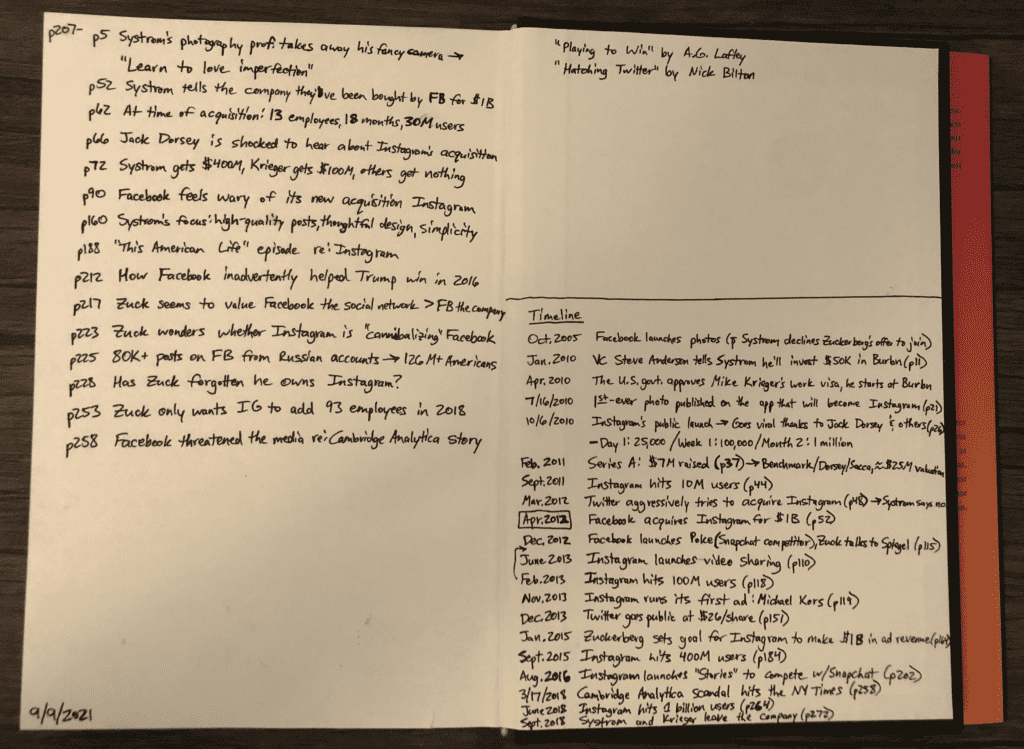
Having a timeline helps me understand key events in context, which is extremely important. The timeline gives me an easy point of reference for how long it was between X and Y, or how long it took a person or company to achieve Z.
In biographies, I sometimes pair a timeline with a list of accomplishments, like this list from Jeff Benedict and Armen Keteyian’s biography of Tiger Woods:
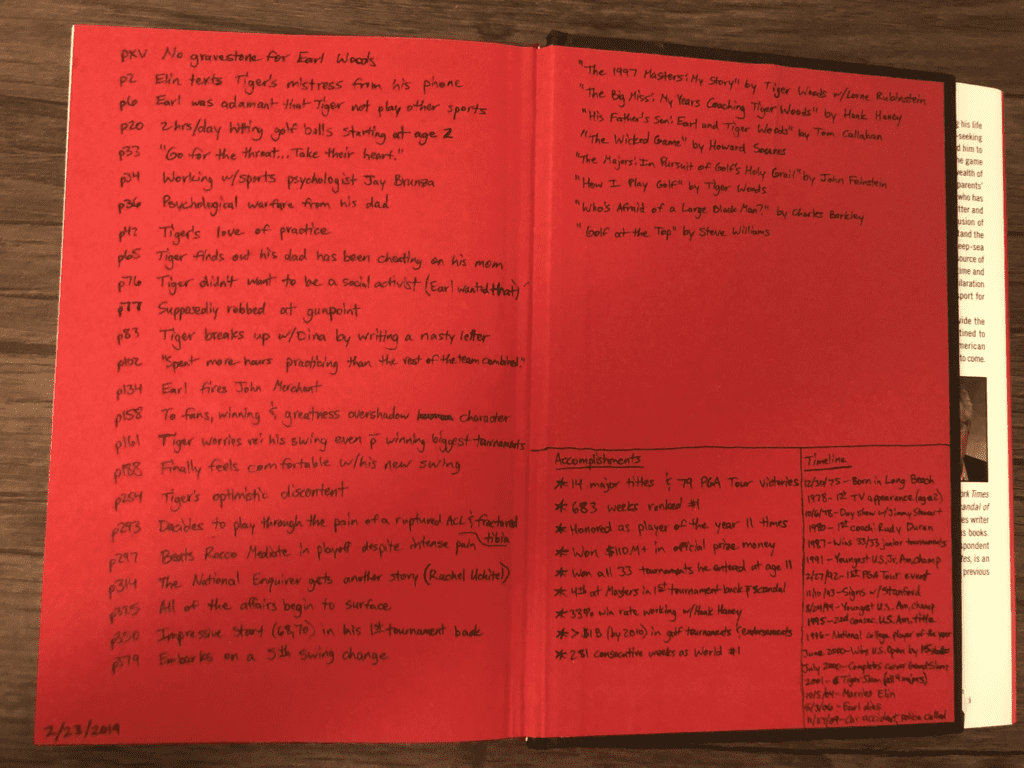
But as I referenced above, I’ve also begun to utilize the back cover for fiction in addition to nonfiction. (Warning: Spoilers below. I include screenshots of my back cover notes from “Gates of Fire” and “The Silent Patient.”)
The types of notes I take in fiction books are a bit different. Generally, I’ve found it’s helpful to include a character list. This is especially true in books that have a lot of characters, such as Gates of Fire by Steven Pressfield (below).
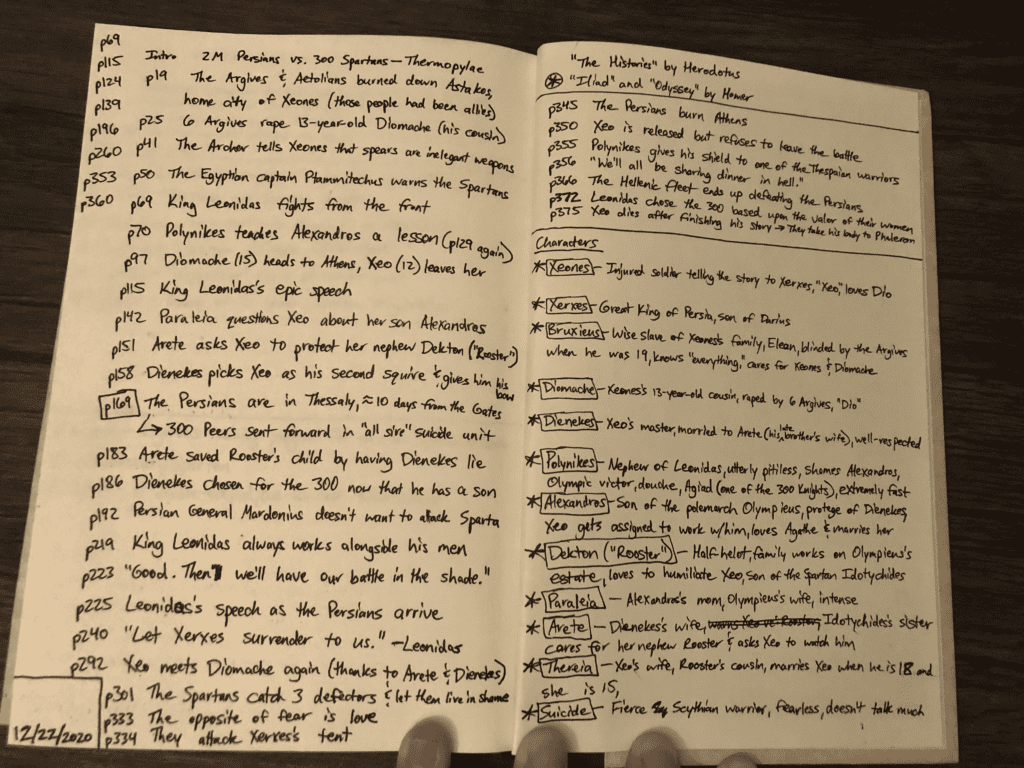
Having this type of character reference sheet helps bail me out of a lot of jams when I’m reading. Who was Paraleia again? Why is she important? Was she related to Alexandros?
For fiction books, I also include notes about key plotlines or events in the story: when one character betrayed another, what a character said they’d do by the end of the story, etc. Here’s an example from The Silent Patient by Alex Michaelides:
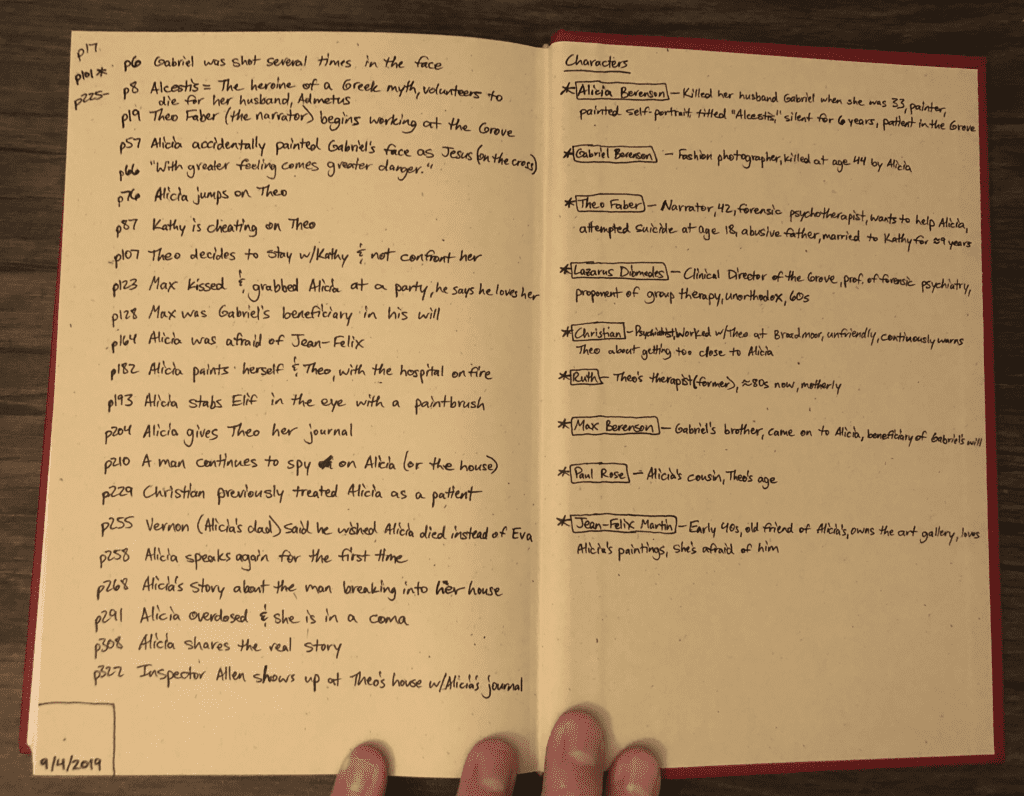
Those notes serve as my 60-second reminder of what happened in the story. So if I’m preparing for a book club discussion or trying to remember the details about a book I read a few years ago, I’ll review my little cheat sheet and the story details will flood back into my brain. No re-read necessary.
I cannot express how useful this system has been for me through the years.
It’s a simple, quick, and easy way to document key learnings from every book. I’ve shared it with friends, and they’ve also found it very helpful.
If you’ve struggled to remember key insights from books you’ve read — fiction or nonfiction — I highly encourage you to start writing in the back cover of each book. Just don’t try it in library books. 😉



